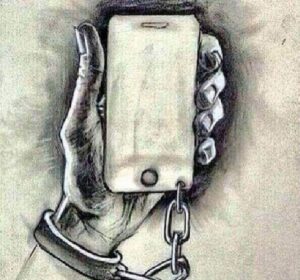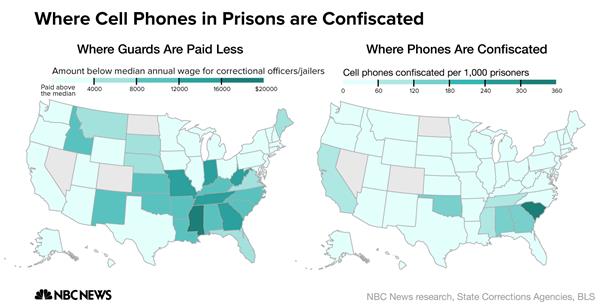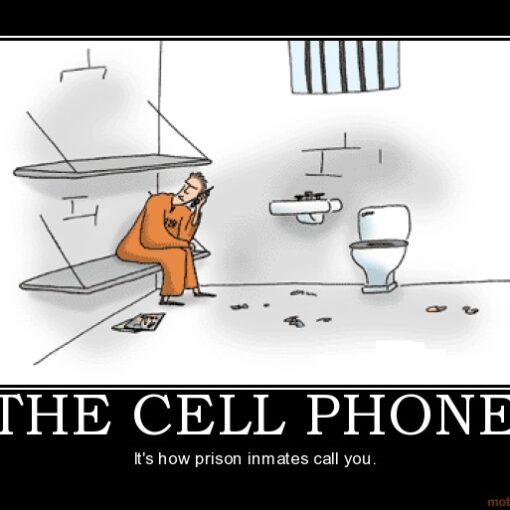 Recently meshIP, LLC submitted comments to the FCC’s Docket No. 13-111, Promoting Technological Solutions to Combat Contraband Wireless Device Use in Correctional Facilities. We are re-posting those comments here:
Recently meshIP, LLC submitted comments to the FCC’s Docket No. 13-111, Promoting Technological Solutions to Combat Contraband Wireless Device Use in Correctional Facilities. We are re-posting those comments here:
Introduction
meshIP, LLC (“meshIP” or “Company”) respectfully submits these comments in response to the Federal Communications Commission’s (“FCC” or “Commission”) Report & Order and Further Notice of Proposed Rulemaking (“FNPRM”) in the above- captioned proceeding.
meshIP is the provider of meshDETECT© Secure Prison Cell Phone Solutions™. meshDETECT© is a unique solution to the problem of contraband cell phones in prison that also provides enhanced cellular wireless telephone access to detainees and their families. We offer a patented technology platform that can be offered in any prison interested in the smart deployment and management of secure prison cell phones – which reduces contraband wireless phone demand, promotes improved detainee behavior, reduces recidivism and increases officer safety.
We urge the FCC to consider the potential negative impact of blanket cellular jamming on the deployment and provision of alternate solutions to the demand for contraband cell phones as well as on those technologies that would introduce true choice and competition into the prison payphone industry, a stated goal of the FCC.
Demand and Supply are Two Sides of the Same Coin
We have long advocated for a balanced strategy that addresses both supply AND demand for contraband cell phones within prisons and jails. An effective contraband cell phone elimination strategy should focus on reducing demand, in addition to restricting supply.
Corrections officials have shared with us the fact that at least 40% of the calls intercepted by currently implemented managed access systems are to phone numbers already on inmates’ approved calling lists. We suspect that an even higher percentage are to other family and loved ones not on the limited list of allowed contacts and are also non-criminal wireless usage, i.e. conversations not related to criminal activity.
We believe that the problem of demand for smuggled mobile phones in jail goes beyond the very real problems of long-term offenders looking to continue their drug or crime operations, witness intimidation and the avoidance of high calling rates.
The demand is also driven by an inmate desire for more communication and more privacy (not secrecy). As such, any comprehensive solution should address both sides of the equation – supply and demand. However, like the problem of drug smuggling, without addressing the demand for contraband, the problem will never be solved.
A recent CDCR inmate, now released, shared with us the following insight, “California’s gangs have evolved over the past 5 decades to operate efficiently within the system of scarce resources. They can get gang orders out of a locked down county jail and into a locked down prison 70 miles away between midnight and 2 AM without reliance on any contraband inside either facility, telephones, nor help from staff using only technology from the 1970’s plus a large number of people inside and out working towards a common goal (FGA in custody terms – in furtherance of a gang activity). Sanctioned gang action does not travel over any phone for a reason. The reality is contraband phones are used for calls to friends and family, mostly female, because the current prison payphone system is inadequate to serve the number of people housed within CA’s system of incarceration. Managed Access has become an asset for the gang that controls and sells and profits from the technology to defeat it, since it now drives demand for the product they offer to sell inside while reducing supply of competing alternatives.”
An article[1] written by a current CDCR inmate also provides some interesting insights into this demand and how it is met, “The black market within the fences of the California prison in which I am incarcerated is as bad as any corrections department in this country. In my case, this prison is five hours from home, and the distance makes visitation a financial burden. Some prisoners have it even worse. The vast majority of the prison population lives on the support of loved ones alone. While the cost of a contraband cellphone is high, the corporation-run prepaid call system is downright robbery. Desperate to stay in touch with loved ones and faced with only unaffordable options, incarcerated people turn to the black market, where they are charged as much as $1,000 for a contraband smartphone. Incarcerated persons prefer to take the risk and spend the money on contraband phones than rely on the prison phone system because of the freedom they provide and their functionality beyond making simple calls. There are no time limits and fees to place calls…”
“The drug market is self-sustaining because drugs are consumed almost immediately. There will always be a demand for them, and the supply can flow as freely as they can be smuggled into the housing units. But a phone can possibly last years once you have one. So, there is a need for constant manipulation of the supply in order to ensure a steady stream of demand. The models of phone that I’ve come across are difficult to conceal and this could be deliberate. In the outside world, there are keychain-sized smartphones with 3G capabilities, but rarely have I seen one in here. I bought a basic talk and text-only phone the size of two fingers, and costed me the same amount as a 4G touchscreen model the size of my hand.”
An additional driver of contraband cell phones is the risk/reward ratio associated with the significant financial rewards for those smuggling these devices into prisons. Recent research[2] has linked contraband smuggling to low pay and high turnover for guards — and salaries for corrections officers in the states with the highest smuggling rates are indeed among the lowest in the nation.
However, by siphoning off and co-opting this non-criminal wireless usage, we can significantly reduce the overall demand for contraband cell phones and therefore the profitability for those smuggling these devices. Less financial reward for cell phone smugglers changes the risk/reward equation and makes it much less appealing given the high personal and professional risk for those caught smuggling.
In addition to reducing the demand for, and therefore the supply of, contraband cell phones, enhanced access to telecommunications services have the proven, significant, additional benefits of reducing recidivism, improving detainee behavior and increasing officer safety.
However blanket cellular jamming in prisons and jails will significantly reduce the technology options available to address the demand for contraband cell phones.
Introducing Choice and Competition into the Prison Payphone Industry
Not only will jamming significantly reduce the technology options available to address the demand for contraband cell phones, it will hamstring a viable, cost effective solution to introducing choice and competition into the prison payphone industry. In fact, the FCC has frequently advocated for competition in the provision and availability of inmate communications services (ICS) in prisons and jails.
In its Second Report And Order And Third Further Notice Of Proposed Rulemaking[3] (NPRM) adopted on 10/22/15, the Commission wrote, “While we adopt regulations in this Order to correct failures in the ICS market, the Commission generally prefers to rely on competition over regulation. We seek additional comment on whether there are ways to promote competition within the ICS market to enable the Commission to sunset or eliminate our regulations adopted herein in the future. In the 2012 NPRM, the Commission noted that the First Wright Petition asked the Commission to “mandate the opening of the ICS market to competition.”
“In the First Wright Petition, the Petitioners further requested that the Commission address high ICS rates by prohibiting exclusive ICS contracts and collect-call-only restrictions at privately administered prisons, and requiring such facilities to permit multiple long-distance carriers to interconnect with prison telephone systems…The Commission sought comment on whether security issues were still a legitimate reason for limiting competition within correctional facilities, and whether any technological advances had changed the justification for such exclusive use.”
The Human Rights Defense Center (HRDC) commented, “The ICS commission issue also illustrates the fundamental problem with the existing status quo; specifically, the lack of competition in the ICS industry, in which, in exchange for commission payments, local jails and 42 state prison systems provide ICS providers with monopoly phone service contracts.[4]”
The American Bar Association commented, “The ABA recommends that the FCC use its statutory authority under section 253(d) of the Act to preempt states from entering into exclusive provider agreements, and open up the ICS market to fair and widespread competition.[5]”
And the Wright Petitioners wrote, “The FCC correctly notes that the Petitioners have been calling for the introduction of competition in the ICS market for more than 15 years, and in fact, this goal served as the basis for Martha Wright and the Petitioners to file the original lawsuit.[6]”
Some of the solutions put forth to achieve this goal include an equal access[7] approach similar to that which was put in place to open up local and long distance services to competition wherein consumers picked their local and long distance providers. Others have suggested a “wholesale/retail” bifurcation of the industry providers.
We believe, like the FCC, ABA, HRDC and the Wright Petitioners, that competition is an essential ingredient in breaking the ICS providers’ monopolies in prisons and jails in order to drive market-based pricing.
However, like the consumer market, unfettered and robust choice is what drives real competition. Completely bypassing the monopolists is the best way to ensure this choice. The consumer telecommunications market, while initially cracked open by regulatory schemes such as equal access, was fully emancipated by the introduction and widespread adoption of cellular phones.
An individual “wireless prison payphone” in the form of a secure cellular service offered to any detainee who wants it, without requiring interconnection to the monopolist’s infrastructure or the forced bifurcation of the industry into wholesale/retail providers, will offer true choice and therefore real competition in an industry that has for so long thrown up barriers to any meaningful competition.
By using commercial cellular networks to bypass the monopolists, no potentially insecure and costly infrastructure, such as WiFi[8], is required in a prison facility and therefore no capital costs to the prison facility as well as no risk of interconnection hurdles and artificial costs imposed by the incumbent ICS provider.
The current prison payphones already installed will remain in place, thereby giving inmates and their families a choice. If desired, the inmate can stand in line, waiting for his 15 minute call in a public area on the traditional prison payphone. Or he can make a controlled and sanctioned cellular call of unlimited length in the relative privacy of his cell.
In this way, real market forces will be introduced into the ICS arena thereby fulfilling the stated goals of the FCC, the ABA, the HDRC and the Wright Petitioners as well as providing choice and cost savings to the families of prisoners throughout the United States.
Conclusion
Accordingly, meshIP requests that the FCC considers the potential negative impact of cellular jamming on the competitive landscape and to alternative technology solutions available to address the problem of contraband cell phones in prisons. The approval of blanket cellular signal jamming runs the risk of hamstringing viable alternative solutions not only to this problem but also to the FCC’s long standing commitment to introducing choice and competition into the prison payphone industry.
————————————————————————————————————————————-
[1] https://shadowproof.com/2017/01/05/corrections-officers-control-supply-demand-contraband-phones-prisons/
[2] https://www.nbcnews.com/news/corrections/southern-prisons-have-smuggled-cellphone-problem-n790251
[3]https://apps.fcc.gov/edocs_public/attachmatch/FCC-15-136A1_Rcd.pdf
[4] https://ecfsapi.fcc.gov/file/60001013059.pdf
[5] https://ecfsapi.fcc.gov/file/60001016566.pdf
[6] https://ecfsapi.fcc.gov/file/60001408397.pdf
[7] https://www.fcc.gov/consumers/guides/local-local-toll-and-long-distance-calling
[8] https://prisoncellphones.com/blog/2013/06/06/the-risks-of-wifi-and-internet-deployment-in-prisons/
- Multi-Blockchain System for Inmate Forensics - April 2, 2024
- Blockchain to Secure Attorney-Inmate Privacy for Prison Calls - June 28, 2023
- meshDETECT® Announces Grant of Ninth Patent For Blockchain Wireless Services - August 26, 2022





